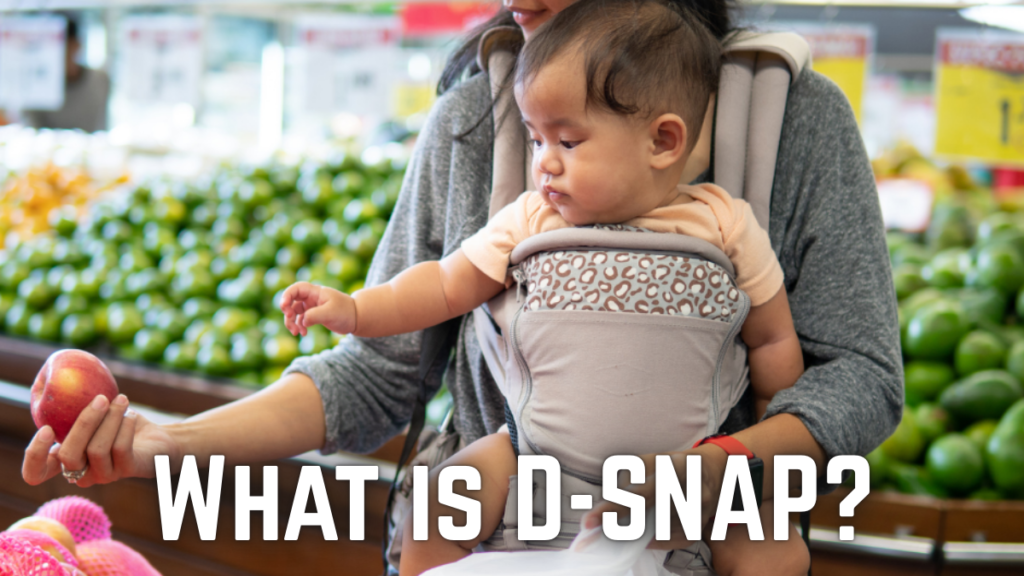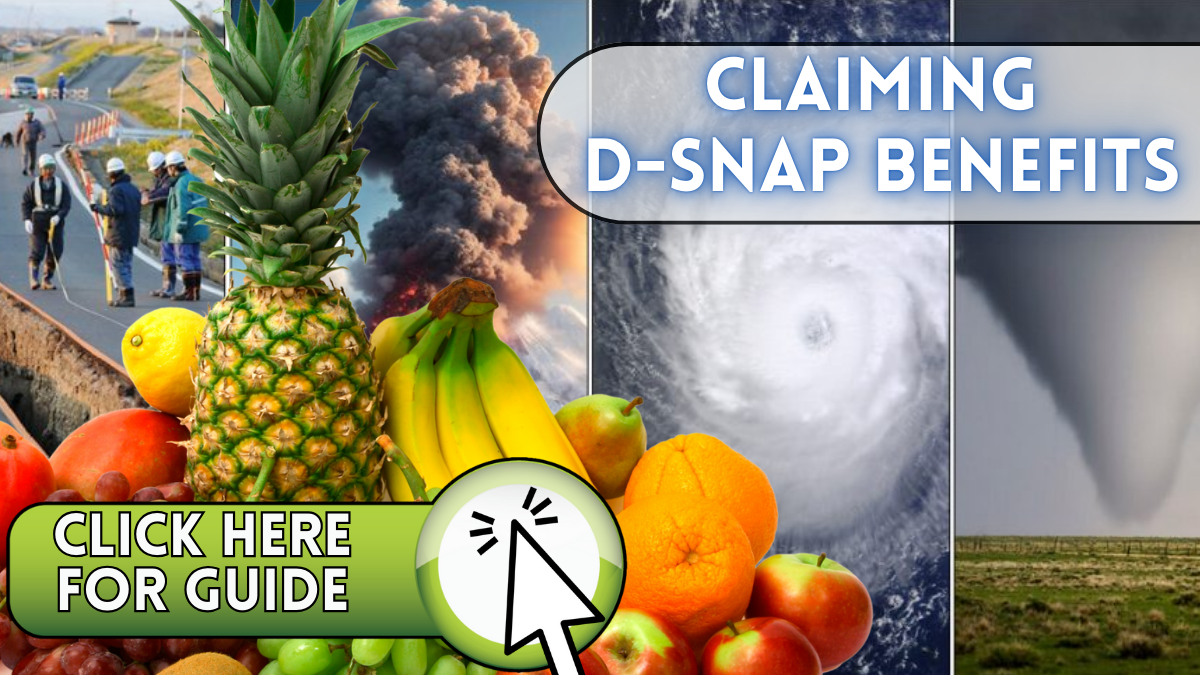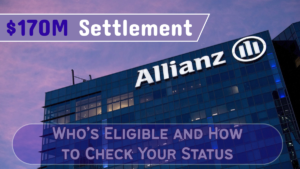How to Get D-SNAP Benefits Following a Natural Disaster? Verify Eligibility!
Natural disasters inflict terrible trauma on individuals and families, in addition to the destruction of food, safe havens, and different requirements. The D-SNAP is a vital lifeline for people who require food help in the course of tough instances like these. This disaster food resource program, run by way of the United States Department of Agriculture (USDA) and administered at the country stage, is supposed to present emergency food help to people affected by natural disasters. If a tragedy takes place and you are in want, understanding the way to apply for D-SNAP advantages should make all of the difference in getting those important food grains.
In this post, we are able to go over the way to follow for D-SNAP advantages, eligibility situations, and advice that will help you win your utility.
What is D-SNAP?

D–SNAP is a short-term software granting food advantages to individuals and families tormented by a disaster, based totally on specific criteria. Unlike the normal Supplemental Nutrition Assistance Program (SNAP) monthly advantages, D-SNAP is an emergency one-time benefit designed to help buy meals while either profit loss, destruction of the home, or disruption of meal availability arose because of the disaster.
D-SNAP advantages are issued through an Electronic Benefit Transfer (EBT) card for the purchase of authorized meal items. This benefit amount is based totally upon the household length and income to be had by the household; however, it usually amounts to more than what a household might be eligible to get hold of below ordinary SNAP on account that it is an emergency application.
Important D-SNAP Features
- Transitory Aid: D-SNAP is transitory aid aimed at helping households until they have rebounded from the disaster.
- Disaster-Related Eligibility: As opposed to usual SNAP benefits, which rely on income and other aspects, D-SNAP eligibility mainly considers the effects of the disaster on the household.
- Geographical Limitation: D-SNAP applies only to counties or areas federally declared as disaster zones.
Who Is Eligible for D-SNAP?
Eligibility for D-SNAP relies upon a number of things, with the main awareness being on how the disaster has affected the family. To be eligible, one must fulfill certain necessities set by both the federal government and the state by going for walks in this program. Below are the main criteria for eligibility:
1. Location-Based Eligibility
The initial requirement is that the family ought to reside in a catastrophe place that has been declared by way of the federal government. When a natural disaster takes place, the President has the authority to claim it, triggering the activation of D-SNAP inside the affected regions. To find out in case your place has been declared a catastrophe quarter, visit the legitimate Federal Emergency Management Agency (FEMA) internet site.
2. Loss of Income or Access to Food
D-SNAP is open to families that have misplaced income because of the catastrophe. These may include:
- Loss of a domestic or severe harm to a domestic, rendering dwelling situations uninhabitable.
- Loss of wages or tasks as a result of the catastrophe.
- Inability to acquire meals because of road closure or destruction of nearby grocery stores.
3. Residency in a Disaster Area

Only individuals who’ve lived within the affected region at the time of the disaster are qualified. You ought to be a resident of a delegated disaster vicinity and provide proof of residency (e.g., a utility bill, condo agreement, or identity card).
4. Household Income and Resources
Although D-SNAP is intended for those in instantaneous hassle, there are income and resource thresholds. These are usually higher than for standard SNAP benefits, considering the emergency aspect of the program. The specific income thresholds differ on a state-by-state basis and by household size but are scaled to reflect the short-term nature of the hardship resulting from the disaster.
Families, for example, may also qualify if their profits are briefly less than the typical SNAP eligibility criteria or if they have misplaced access to sources as a result of the disaster. Nonetheless, a few jurisdictions allow households to use although their belongings exceed the same old degree, owing to the unusual nature of a disaster.
5. Identity and Citizenship
You need to be a US citizen or a qualified non-citizen. Throughout the utility process, you may have had to provide evidence of abode and prison citizenship. A passport, state identification card, or birth certificate are all appropriate styles of identification.
How to Apply for D-SNAP Benefits
Applying for D-SNAP Benefits is a procedure that varies from state to state but normally follows those steps:
Step 1: Check If Your Area Is Eligible
First, check whether your location has been marked as a disaster area. This is usually reported by FEMA and the state social services department. You can check this on government websites or contact your local social services department.
Step 2: Collect Documents Needed
When you practice for D-SNAP, you ought to offer evidence verifying your identity, home, and disaster-related losses. Typical files to get include identification (e.g., driver’s license, kingdom ID, passport).
- Residency in the catastrophe area (e.g., software bills, leasing settlement).
- Income or loss of profits (as an example, pay stubs, tax returns, or a letter from your agency).
- An announcement outlining the catastrophe’s outcomes to your household.
Because D-SNAP is a time-sensitive initiative, it’s important to collect the information as quickly as feasible as soon as a disaster is declared.
Step 3: Submit Your Application
Once your area has been distinctively eligible for D-SNAP, the nation will make the software procedure public. Applications can usually be submitted online, by means of cellphone, or in person at unique application sites. Given the program’s emergency situation, the application manner is typically shortened to make certain rapid approval.
Numerous states offer an easy D-SNAP application in that you only need to deliver basic facts about your own home and how the disaster affected you. The country may also provide expedited processing, which means you might obtain your benefits within some days of submitting your application.
Step 4: Wait for Approval
After you post your software, the kingdom will assess it to set up eligibility. The processing time for D-SNAP programs varies, despite the fact that the program is meant to provide benefits as hastily as viable. In many circumstances, families can expect to receive assistance within 1-2 weeks after applying.
Step 5: Receive benefits
When regular, D-SNAP benefits will be paid through the use of an EBT card, which is just like a debit card. You can use the cardboard to buy certified food items from grocery shops, supermarkets, and different authorized vendors. Benefits are commonly granted in full for the family’s eligible needs and can be used right away.
Tips for Securing D-SNAP Benefits
To increase your chances of receiving D-SNAP benefits quickly and effectively, follow these tips:
1. Apply as Soon as Possible
D-SNAP is time-sensitive, and the software intervals are normally short. It’s crucial to apply as soon as the program has been activated in your location. The earlier you follow, the sooner you may get help.
2. Keep Your Documents Organized
The more prepared your software program is, the faster it may be processed. Make certain that you deliver all documentation you want, collectively with identification, proof of residence, and documentation of loss of earnings or different catastrophe-associated losses.
3. Check for Updates
Keep abreast of the progress of your utility through the kingdom’s website or hotline. It is usually faster to answer rapidly if there is a problem with your application or similar documentation is required to prevent delays.
4. Don’t Hesitate to Seek Assistance
If you want facts on the software technique, most states have helplines or assistance facilities that may walk you through the process. Utilize those offerings if you’re no longer positive about any component of your application.
What Can You Buy with D-SNAP Benefits?
D-SNAP advantages are used in the same manner as fashionable SNAP benefits. They can be used to buy a number of foodstuffs, together with
- Fresh greens and end result
- Fresh vegetables and fruits
- Meat, poultry, and fish
- Dairy products
- Bread and cereals
- Non-alcoholic beverages
- Seeds and plants that yield food for the household
D-SNAP benefits cannot be utilized, however, to buy non-food items like
- Alcohol
- Tobacco products
- Pet food
- Household items (e.g., soap, cleaning supplies)
Note that D-SNAP benefits are strictly for food, and applying them for non-eligible purposes can lead to penalties or benefit loss.
Conclusion
D-SNAP, or Disaster Supplemental Nutrition Assistance Program, is a significant program supplying disaster-related emergency food help to the ones whose families or households had been affected by the catastrophe. If you’re in a role where you would really like to use D-SNAP, it will offer a few a good deal of wished-for remedy from meal expenditures right now after disaster strikes. All you need to do as a way to get the assistance you need to climate the hurricane is to be eligible, have all of the required files, and follow on time.
Keep in mind that D-SNAP is only a brief software designed to deal with brief-time-period wishes; it is therefore a terrific idea to try to find out other avenues of recovery assistance, including catastrophe relief packages, submitting coverage claims, and aid from your nearby community.
FAQs
Who qualifies for D-SNAP benefits after a natural disaster?
Those living in federally declared disaster zones who’ve lost income, housing, or food access may be eligible for D-SNAP.
How do I know if my area qualifies for D-SNAP?
Check FEMA’s website or your state’s social services for disaster declarations and D-SNAP activation in your location.
What documents are needed to apply for D-SNAP?
You’ll need ID, proof of residency, income loss evidence, and a statement explaining disaster-related hardship your household experienced.



